The OnePlus 7 Pro Review: Outstanding Performance & Screen, Adequate Everything Else
by Andrei Frumusanu on June 19, 2019 12:00 PM EST- Posted in
- Mobile
- Smartphones
- OnePlus
- OnePlus 7 Pro
Camera - Low Light Evaluation
One of the purported advantages of the IMX586 is that it’s able to achieve 4:1 pixel binning in its 12MP capture mode. This means that in effect the pixel pitch in terms of light capture ability ends up at 1.6µm – which is an increase and advantage over last year’s 6T’s 1.22µm module and even 1.4µm modules from the traditional sensor size crowd such as Samsung, LG, Apple and Google.
Again, what will be interesting in this comparison from a competitive stand-point is how the Honor 20 Pro and Oppo Reno stand up against the OnePlus 7 Pro as we can directly analyse whose software processing algorithms are superior.
As aforementioned, the OP7Pro night shots were done on the new 9.7.7 firmware which includes a new update and improved Nightscape low-light capture mode, which did improve things a lot compared to the release firmware.
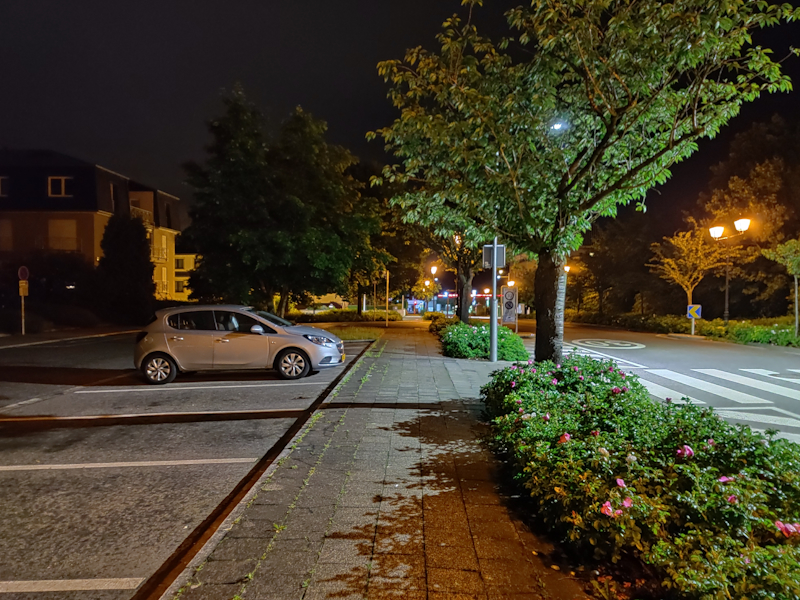
[ OnePlus 7 Pro ] - [ OnePlus 6T ]
[ S10+ (E) ] - [ S10+ (S) ]
[ P30 Pro ] - [ Honor 20 Pro ]
[ G8 ] - [ Oppo Reno ]
[ Pixel 3 ] - [ Pixel 3a ] - [ iPhone XS ]
In the auto mode, I have a very hard time to understand what’s happening to the OP7Pro here. The results are quite outright terrible and the phone is posting significantly washed out textures compared to what the Oppo Reno and the H20Pro are able to get. OnePlus here prioritised too much on having a longer exposure rather than higher ISO levels, so even though both the OP7Pro and the Reno both have similar resulting brightness levels, the Reno is massively sharper. The H20Pro is also far ahead, but granted the phone has a big advantage with its f/1.4 aperture lens. In Auto mode this is actually a downgrade from what the 6T was able to achieve.
Turning on Night mode notably improves things, however it’s not sufficient to compete with the top low-light performers. The Reno’s Night mode, while a bit flat, does significantly better in terms of detail and is a lot sharper. Google, Huawei and now Samsung remain as the top perfomers.
The OP7Pro’s wide-angle here was just a disaster and it didn’t focus correctly. Unfortunately OnePlus doesn’t yet offer Nightscape mode for the wide-angle module, and thus it’s far behind Huawei and Samsung in such shots.
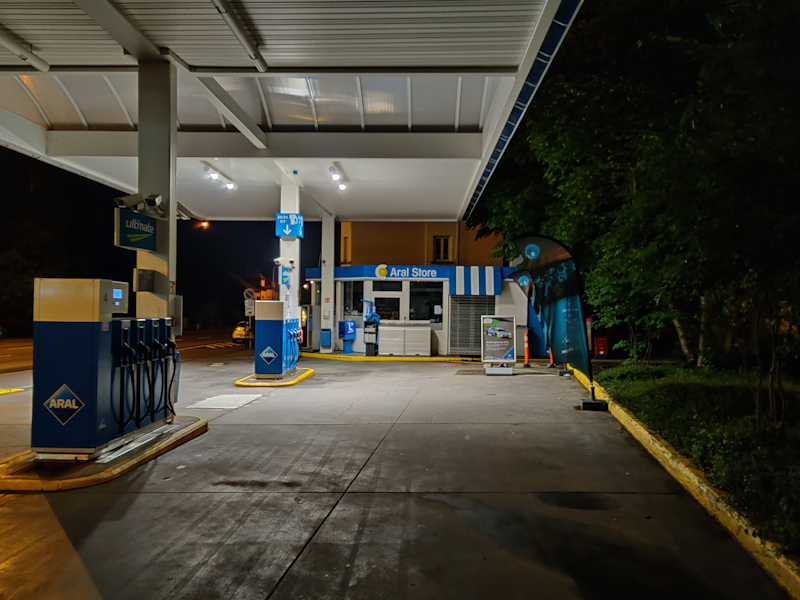
[ OnePlus 7 Pro ] - [ OnePlus 6T ]
[ S10+ (E) ] - [ S10+ (S) ]
[ P30 Pro ] - [ Honor 20 Pro ]
[ G8 ] - [ Oppo Reno ]
[ Pixel 3 ] - [ Pixel 3a ] - [ iPhone XS ]
Here while OnePlus was able to improve on the sometimes comical results of the 6T’s Nightscape processing as seen here, it’s still only good enough for a thumbnail as under closer inspection we see that the phone continues to lag behind other vendors. As seen in the 7 shots, whilst the night mode does brighten things up, it actually severely blurs out elements that were well lit.
The wide-angle continues to be uncompetitive.
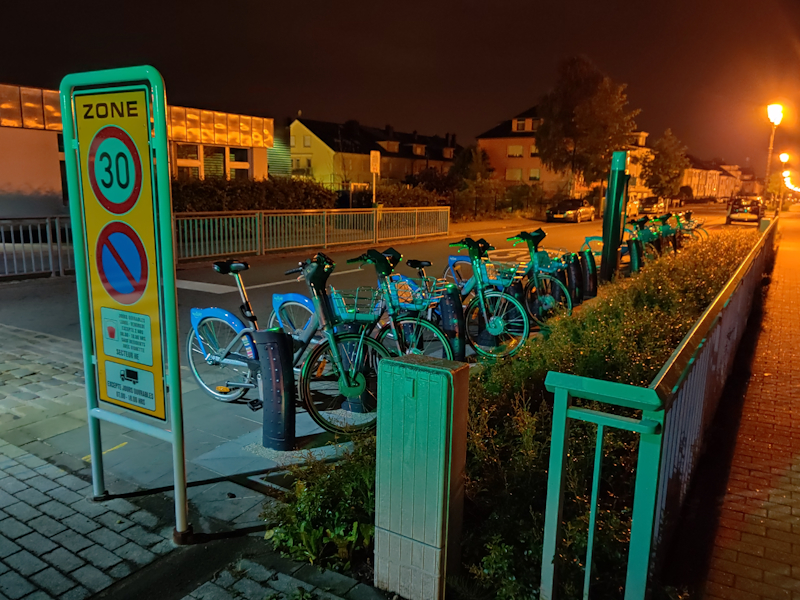
[ OnePlus 7 Pro ] - [ OnePlus 6T ]
[ S10+ (E) ] - [ S10+ (S) ]
[ P30 Pro ] - [ Honor 20 Pro ]
[ G8 ] - [ Oppo Reno ]
[ Pixel 3 ] - [ Pixel 3a ] - [ iPhone XS ]
When going dark and darker in scenes, we actually see that sometimes the Nightscape mode does improve some aspects, but again there’s a big compromise, as seen in this shot the text on the traffic sign is completely blurred out, while it was reasonably good in the auto mode.
The wide-angle is bad.
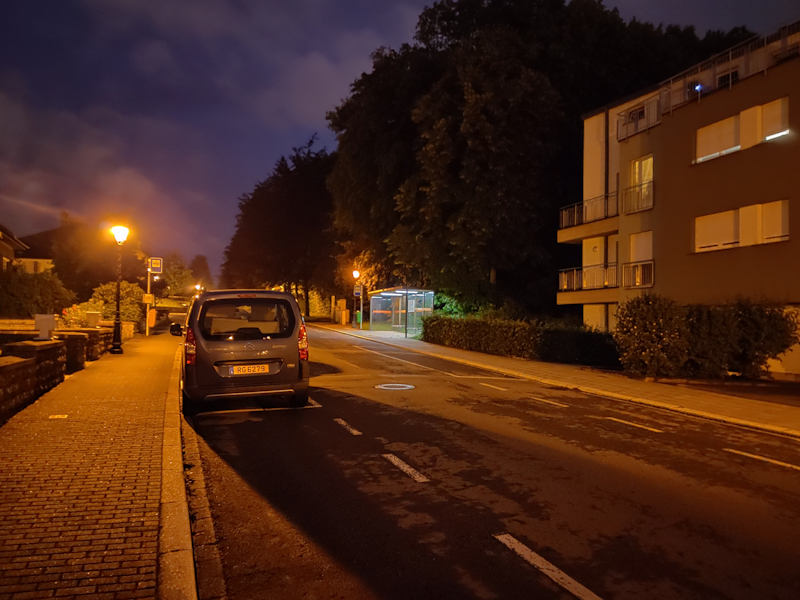
[ OnePlus 7 Pro ] - [ OnePlus 6T ]
[ S10+ (E) ] - [ S10+ (S) ]
[ P30 Pro ] - [ Honor 20 Pro ]
[ G8 ] - [ Oppo Reno ]
[ Pixel 3 ] - [ Pixel 3a ] - [ iPhone XS ]
We continue with bad results; here yet again while the Nightscape mode is able to brighten things up a lot, we again see large degradations in the better exposed parts of the scene such as the pavement.
The wide-angle is having a hard time to capture much.

[ OnePlus 7 Pro ] - [ OnePlus 6T ]
[ S10+ (E) ] - [ S10+ (S) ]
[ P30 Pro ] - [ Honor 20 Pro ]
[ G8 ] - [ Oppo Reno ]
[ Pixel 3 ] - [ Pixel 3a ] - [ iPhone XS ]
It’s only in effectively uniformly dark scenes where one can say the Nightscape mode is actually a no-compromise improvement over the auto mode. Here the OnePlus 7 Pro showcases much better results than the previous generation 6T.
Unfortunately that’s not enough for the latest generation phones as well as the new software updates from the competition. While the 7Pro is competitive against the Snapdragon S10 with the original low-light mode, Samsung’s new Night mode as seen in the Exynos shot above is leaps ahead of OnePlus.
The wide-angle is effectively blind here.
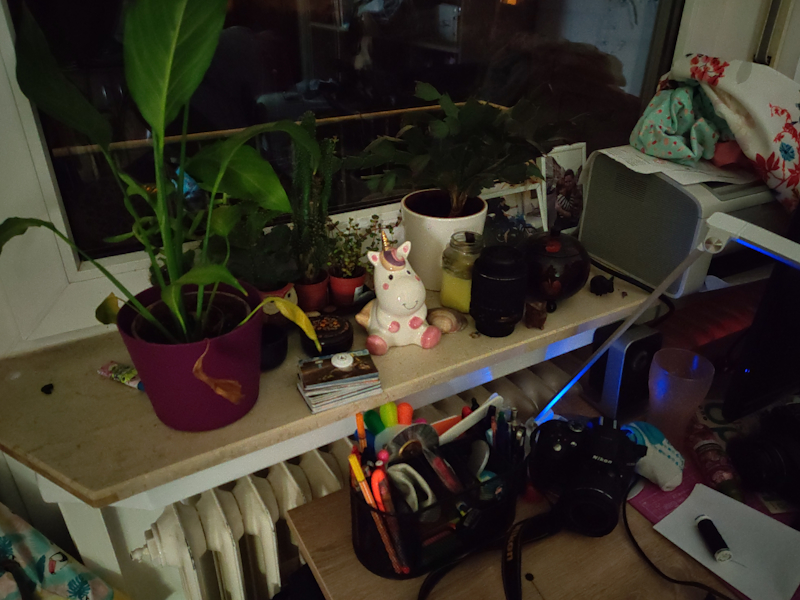
[ OnePlus 7 Pro ] - [ OnePlus 6T ]
[ S10+ (E) ] - [ S10+ (S) ]
[ P30 Pro ] - [ Honor 20 Pro ]
[ G8 ] - [ Oppo Reno ]
[ Pixel 3 ] - [ Pixel 3a ] - [ iPhone XS ]
This last scene largely mimics the last shots, again while the OP7Pro would have been competitive against the S10’s original low-light mode, it can’t compete against the new improved variant.
Overall Low-Light Capture Conclusion – A Big Disappointment
It’s very much unfortunate that OnePlus wasn’t able to invest more efforts into its computational photography. Even with the very latest firmware update we’ve used here the phone simply has massive issues under low light. There are some shots we’ve seen today which do point out what some of the issues are with OnePlus Nightscape mode: Unlike Huawei’s, Google’s and now Samsung’s Night modes, it doesn’t just selectively stack areas for photo exposures, and instead does the whole frame, and it’s not able to correctly stack sections to as to avoid blurring. In effect the Nightscape mode should be good on a tri-pod, but it’s not competitive in hand-held mode.
This is solely something that OnePlus has to fix, as Honor and Oppo showcase it’s possible to achieve good results with the very same hardware sensor.










91 Comments
View All Comments
RSAUser - Wednesday, June 19, 2019 - link
Didn't they release a day one software fix for this? Remember reading something about it.XabanakFanatik - Wednesday, June 19, 2019 - link
I have not seen any attempts to fix this, and I have checked after every update (two so far since launch day) to see if it is fixed.It is not yet resolved.
Dorkaman - Sunday, June 30, 2019 - link
Hi Xaban this is bad news. I guess I'll wait for a phone with 120Hz display. 120Hz divides cleanly with 24, 30 and 60 so videos with those numbers should be smooth.packers - Monday, July 8, 2019 - link
Great Article!I read your Article. Thanks for sharing with us.https://www.shiftinindia.com/
Kishoreshack - Wednesday, June 19, 2019 - link
Has anyone observed color shifting on curve edges?The Curve in display should not be overwhelming.
Except for Note 9 I have seen that in most Curved displays
The amount of curvature given to the display needs to be in limit
I think the abysmal White Balance of Pictures taken needs to be addressed
&
Even the variable refresh rate of screen needs to be upgraded in line with Apples
Don't think so it would be that tough to do that
warreo - Wednesday, June 19, 2019 - link
There is definitely color shifting on my OP7P, especially at the curves. The color shift in general is notably worse than on my Pixel 3, which interestingly was an LG panel vs. Samsung on the OP7P.That said, it's not Pixel 2 XL level bad, which was flat out terrible. I couldn't accept the P2XL's shift and returned it. My OP7P is acceptable and I've been really happy with the phone, mediocre camera and all.
s.yu - Wednesday, June 19, 2019 - link
I wonder if one could drill a hole in the frame and add a 3.5mm port through jump wire or something.melgross - Wednesday, June 19, 2019 - link
Oh, just get over it.Lord of the Bored - Wednesday, June 19, 2019 - link
NEVER!rohitghali - Sunday, October 13, 2019 - link
The only reason I'm not buying this phone is the jack.